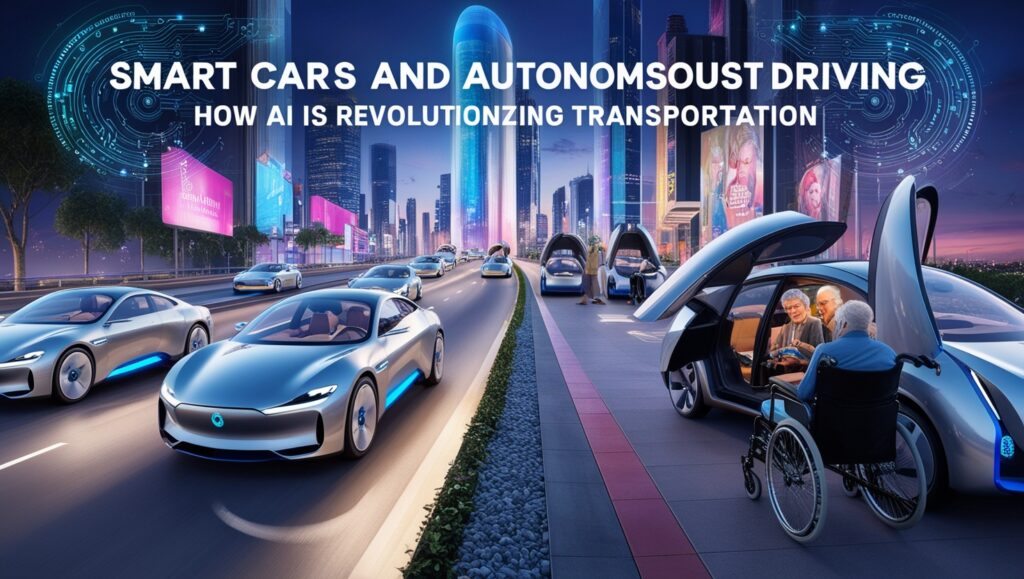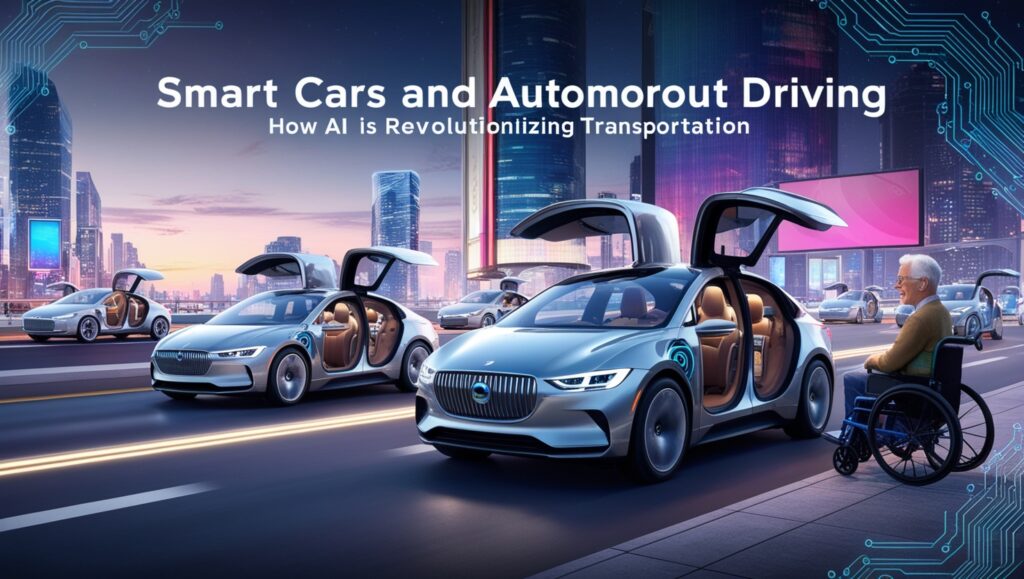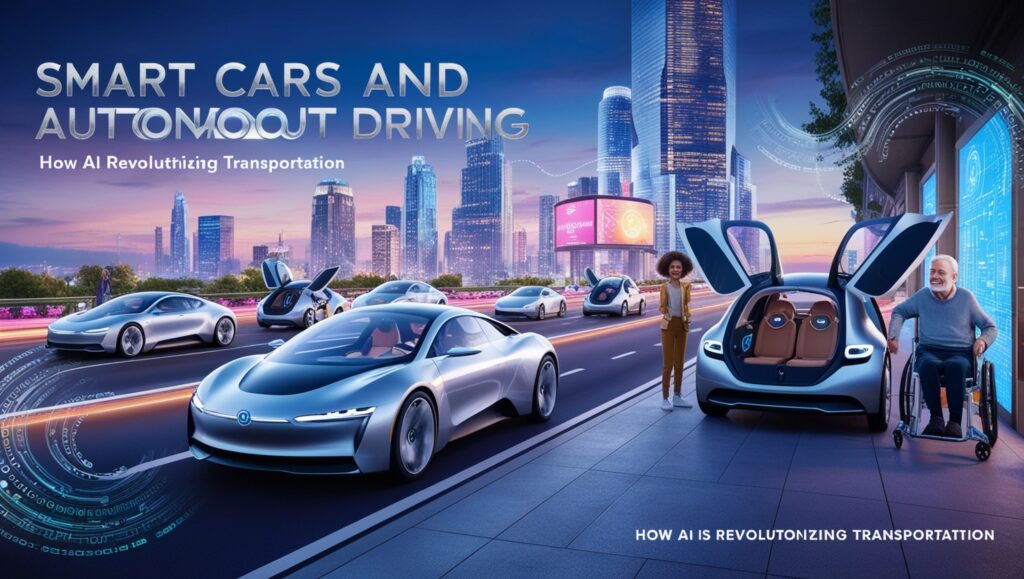Smart Cars and Autonomous Driving: How AI is Revolutionizing Transportation

The automotive industry is undergoing a remarkable transformation as artificial intelligence (AI) takes center stage. From smart cars equipped with advanced driver-assistance systems (ADAS) to fully autonomous vehicles, AI is reshaping how we navigate the world, making transportation safer, more efficient, and increasingly sustainable.
The Rise of Smart Cars
Smart cars are vehicles embedded with advanced technologies that enhance safety, connectivity, and convenience. AI plays a pivotal role in these systems, enabling real-time data processing and intelligent decision-making.
Key Features of Smart Cars
- Advanced Driver-Assistance Systems (ADAS)
- AI-powered features like adaptive cruise control, lane-keeping assist, and automatic emergency braking enhance road safety.
- Systems like Tesla’s Autopilot and GM’s Super Cruise push the boundaries of semi-autonomous driving.
- Connectivity and IoT Integration
- Smart cars use the Internet of Things (IoT) to connect with other vehicles (V2V), infrastructure (V2I), and the cloud, creating a networked transportation ecosystem.
- In-car infotainment systems powered by AI provide personalized navigation, music, and voice-command features.
- Predictive Maintenance
- AI monitors vehicle health, predicting and alerting drivers to potential issues before they occur, reducing breakdowns and repair costs.
- Energy Efficiency
- AI optimizes energy usage in electric and hybrid vehicles by learning driving patterns and adapting power distribution.
Autonomous Driving: The Next Frontier
Autonomous vehicles (AVs) represent the pinnacle of AI integration in transportation. These vehicles rely on AI-driven systems to interpret their environment, make decisions, and drive without human intervention.
How Autonomous Vehicles Work
AVs use a combination of sensors, cameras, radar, and LIDAR to create a 360-degree view of their surroundings. AI algorithms process this data to:
- Detect objects, pedestrians, and road signs.
- Predict the behavior of other road users.
- Navigate routes and make driving decisions in real-time.

Levels of Autonomy
The Society of Automotive Engineers (SAE) defines six levels of vehicle automation:
- Level 0: No automation.
- Level 1-2: Partial automation (e.g., adaptive cruise control).
- Level 3-4: High automation (driver intervention minimal or optional).
- Level 5: Full automation with no driver required.
Currently, most systems on the market operate at Levels 2 or 3, but companies like Waymo and Tesla are pushing toward Level 5 autonomy.
Benefits of AI in Transportation
- Enhanced Road Safety
AI reduces human errors, which account for over 90% of traffic accidents. Features like collision detection and automated braking save lives. - Increased Efficiency
Autonomous vehicles optimize traffic flow, reduce congestion, and minimize fuel consumption, benefiting both drivers and the environment. - Accessibility
Self-driving cars offer mobility solutions for people with disabilities or those unable to drive, increasing independence and convenience. - Reduced Costs
AI-powered fleet management systems improve logistics, reducing operating costs for businesses and ride-sharing services.
Challenges to Overcome
- Regulatory and Legal Barriers
Governments worldwide must establish clear regulations and liability frameworks for AVs. - Technical Limitations
Autonomous systems must navigate complex environments and adapt to unpredictable human behavior, which remains a significant hurdle. - Cybersecurity Risks
As smart cars become more connected, they face risks of hacking and data breaches, necessitating robust security measures. - Public Acceptance
Trust in AI technology is critical for widespread adoption. Educating the public about the benefits and safety of AVs is essential.
The Future of AI in Transportation
AI is poised to revolutionize transportation on multiple fronts:
- Fully Autonomous Fleets: Companies like Waymo and Cruise are developing robotaxi services, reducing the need for personal vehicle ownership.
- Smart Cities: AI-enabled infrastructure will guide vehicles, optimize traffic, and reduce urban congestion.
- Sustainable Travel: AI will drive innovations in electric and shared mobility, making transportation greener.

Smart cars and autonomous driving represent a paradigm shift in mobility. By harnessing the power of AI, these technologies promise a future where transportation is safer, more efficient, and accessible to all. As innovation accelerates, the roads of tomorrow will be guided not by human hands but by the intelligence of machines.






